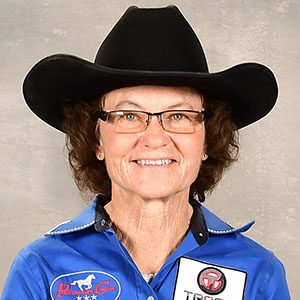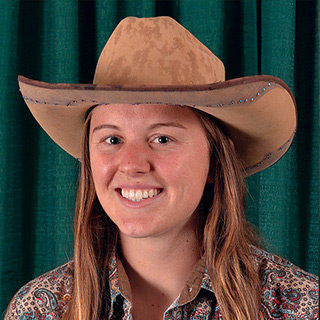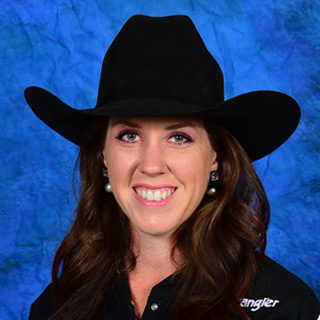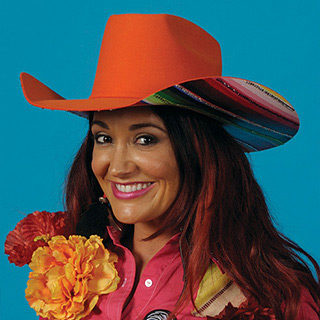Barrel racing is a rodeo event in which a horse and rider attempt to complete a cloverleaf pattern around preset barrels in the fastest time. Though both boys and girls compete at the youth level, in collegiate and professional ranks, it is a rodeo event for women. It combines the horse’s athletic ability and the horsemanship skills of a rider in order to safely and successfully maneuver a horse in a pattern around three barrels (typically three fifty-five gallon metal or plastic drums) placed in a triangle in the center of an arena.
Barrel racing
History
Barrel racing originally developed as an event for women, while the men roped or rode bulls and broncs. In early barrel racing, the pattern alternated between a figure-eight and a cloverleaf pattern. The figure-eight was eventually dropped in favor of the more difficult cloverleaf.
It is believed that competitive barrel racing was first held in Texas. The WPRA was developed in 1948 by a group of women from Texas who were looking to make a home for themselves and women in general in the sport of rodeo. When it initially began, the WPRA was called the Girls Rodeo Association, with the acronym GRA. It consisted of only 74 members, with as few as 60 approved tour events. The Girls Rodeo Association was the first body of rodeo developed specifically for women. The GRA eventually changed its name and officially became the WPRA in 1981, and the WPRA still allows women to compete in the various rodeo events as they like, but barrel racing remains the most popular event competition.
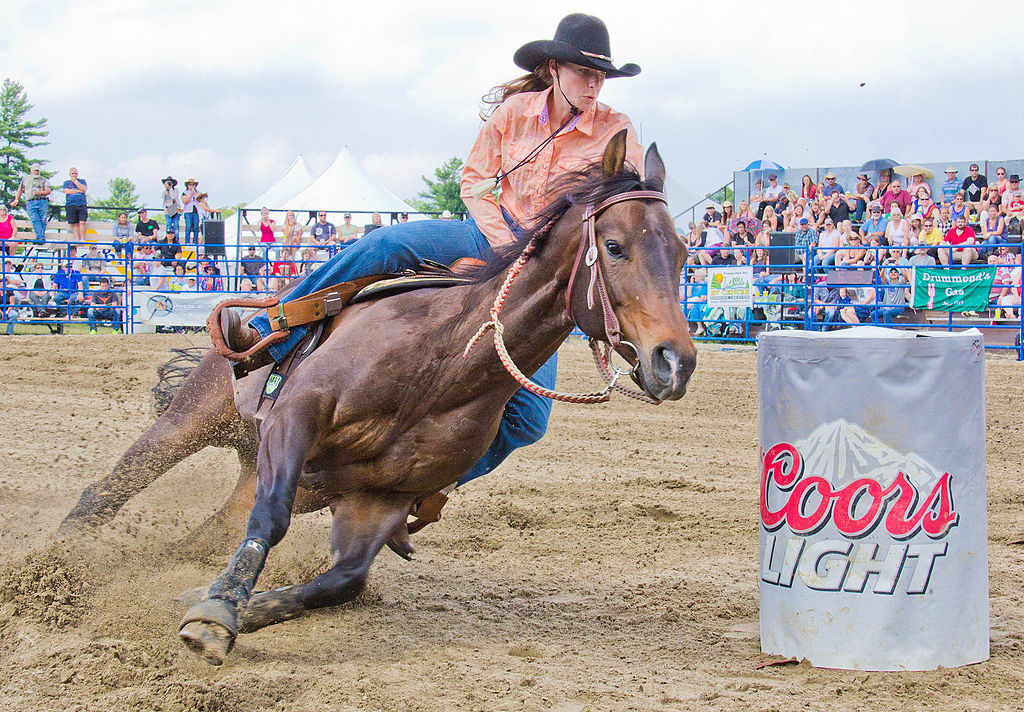

Rules
In barrel racing, the fastest time wins. It is not judged under any subjective points of view, only the clock. Barrel racers in competition at the professional level must pay attention to detail while maneuvering at high speeds. Precise control is required to win. The rider is allowed to choose either the right or left barrel as their first barrel but must complete the correct pattern, allowing for turn changes depending on whether they are on the right or left lead. Running past a barrel and off the pattern will result in a “no time” score and disqualification. If a barrel racer or her horse hit a barrel and knocks it over there is a time penalty of five seconds (sometimes more), which usually will result in time too slow to win. There is a sixty-second-time limit to complete the course after time begins. Contestants cannot be required to start a run from an off-center alleyway, but contestants are not allowed to enter the arena and “set” the horse. It is required that the arena is “worked” after twelve contestants have run and before slack. Barrels are required to be fifty-five gallons, metal, enclosed at both ends, and of at least two colors. Competitors in the National Barrel Racing Association (NBRA) are required to wear a western long-sleeved shirt (tucked in), western cut pants or jeans, western hat, and boots. Competitors are required to abide by this dress code beginning one hour before the competition and lasting until after slack.
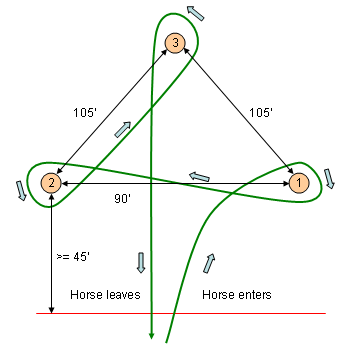
Pattern
The approach to the first barrel is a critical moment in executing a successful pattern; the rider must rate her horse’s speed at the right moment to enter the correct path to make a perfect turn. The rider can decide whether to go to the left or the right barrel first. Each turn in barrel racing should be a relatively even half circle around the barrel. As the horse sets up to take the turn, the rider must be in a position as well, which entails sitting deeply in the saddle, using one hand on the horn and the other hand to guide the horse through and around the barrel turn. The rider’s legs will be held close to the horse’s sides; the leg to the inside of the turn should be held securely along the girth to support the horse’s rib cage and give them a focal point for the turn. The athleticism required for this maneuvering comes from optimum physical fitness of the rider and especially the horse. Improper preparation for such a sport can cause injury to both horse and rider. Injury can be avoided by using the proper protection for both horse and rider.
In approaching the second barrel, the rider will be looking through the turn and now focused on the spot to enter the second barrel, across the arena. Now the horse and rider will go around the barrel in the opposite direction, following exactly the same procedure and switching to the opposite limbs. Next, running toward the back side of the arena (opposite the entrance), and through the middle, they are aiming for the third and final barrel, in the same direction as the second barrel was taken, all while racing against the timer. Completing the third and final turn sends them “home”, which represents crossing the timer or line once more to finish.
From the finish of the third barrel turn, the horse and rider have a straight shot back down the center of the arena, which means they must stay between the two other barrels. Once the timer is crossed, the clock stops to reveal their race time. Now the cloverleaf pattern, the three barrels set in a triangle formation, is completed.
Standard barrel racing patterns call for a precise distance between the start line and the first barrel, from the first to the second barrel, and from the second to the third barrel. The pattern from every point of the cloverleaf will have a precisely measured distance from one point to the next.
Usually, the established distances are as follows:
- 90 feet between barrel 1 and 2.
- 105 feet between barrel 1 and 3 and between 2 and 3.
- 60 feet from barrels 1 and 2 to score line.
Note: In a standard WPRA pattern, the scoreline begins at the plane of the arena, meaning from the fence to fence regardless of the position of the electric eye or timer.
In larger arenas, there is a maximum allowable distance of 105 feet between barrels 1 and 2, and a maximum distance of 120 feet between barrels 2 and 3, and 1 and 3. Barrels 1 and 2 must be at least 18 feet from the sides of the arena — in smaller arenas this distance may be less, but in no instance should the barrels be any closer than 15 feet from the sides of the arena.
Barrel 3 should be no closer than 25 feet to the end of the arena, and should be set no more than 15 feet longer than the first and second barrel. If arena size permits, barrels must be set 60 feet or further apart. In small arenas it is recommended the pattern be reduced proportionately to a standard barrel pattern.
The above pattern is the set pattern for the Women’s Professional Rodeo Association (WPRA), and The National Intercollegiate Rodeo Association (NIRA).
The National Barrel Horse Association (NBHA) use the following layout for governing patterns:
- A minimum of 15 feet between each of the first two barrels and the side fence.
- A minimum of 30 feet between the third barrel and the back fence.
- A minimum of 30 feet between the time line and the first barrel.
Associations
Since its beginnings, the sport has developed over the years into a highly organized, exciting, but well-governed sport. The main sanctioning body of professional female rodeo athletes is the Women’s Professional Rodeo Association. Today, the WPRA boasts a total of over 800 sanctioned tour events with an annual payout of more than three million dollars. The WPRA is divided into 12 divisional circuits. Average and overall winners from their circuit compete at the Ram National Circuit Finals Rodeo. In the United States, two national organizations promote events for barrel racing alone: the National Barrel Horse Association and Better Barrel Races. The WPRA is co-sanctioned with the PRCA (Professional Rodeo Cowboys Association) to allow women to compete in PRCA-endorsed rodeos. Without the co-sanction, barrel racing would be removed from PRCA rodeos and the Wrangler National Finals Rodeo.
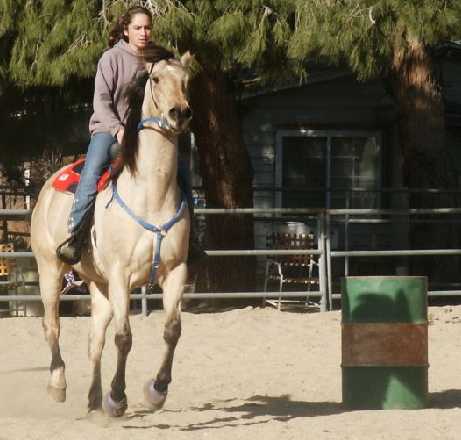
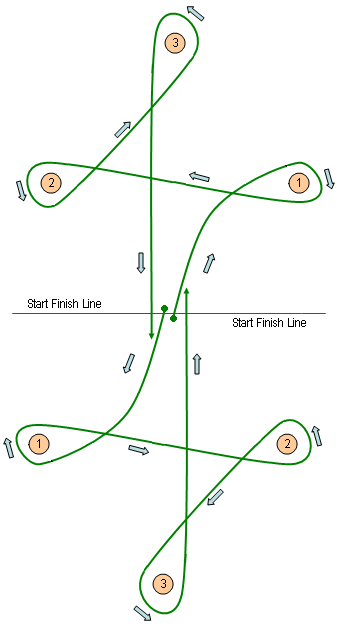
Equipments
There are no specific bits required for barrel racing, although some bits are more common to barrel racers. The type used is determined by an individual horse’s needs. Bits with longer shanks cause the horse to stop quicker than normal due to the additional leverage on the mouth/jaw, while bits with shorter shanks are used for more lateral work. Curb chains, nosebands, and tie-downs can be used in conjunction with the bit. Curb chains are primarily used for rate. Tie-downs give the horse a sense of security when stopping and turning.
Typically, resins used in barrel racing competitions are fully intact. This allows the rider the ability to quickly recover the reins if dropped, unlike split reins. Martha Josey Knot reins are popular within the barrel racing community, as the knots in the rope allow for a better grip. These reins are also adjustable, making them an ideal choice for competitors of all sizes. Leather reins are also widely used. These can be flat or braided, but both varieties have a tendency to become slippery when wet. Wax reins are also available, but not as widely used due to the fact that they become sticky.
A lightweight saddle with a high horn and cantle is ideal. Forward strung stirrups also help to keep the rider’s feet in proper position. Typically, riders choose a saddle that is up to a full size smaller than he or she would normally use. Most importantly, it must fit the rider’s horse properly. Saddle pads and cinches are chosen based on the horse’s size.
Costs for the purchase of a high caliber barrel racing horse can currently reach well over $100,000, depending on the ability and individuality of the horse. While breeding plays a huge role in the sale price of a horse, athletic ability, intelligence, drive, and willingness to please also “make or break” the sale of a horse.

